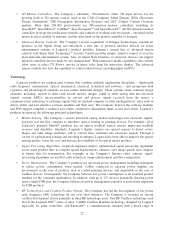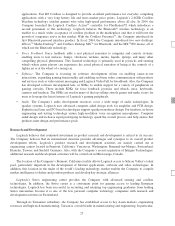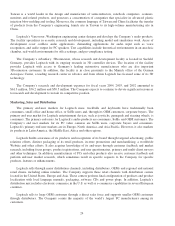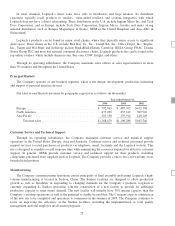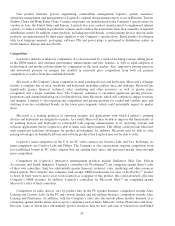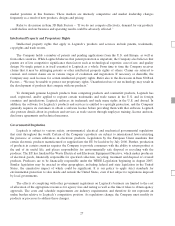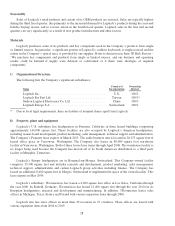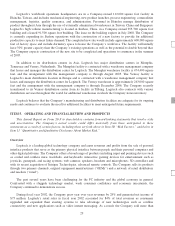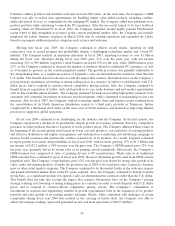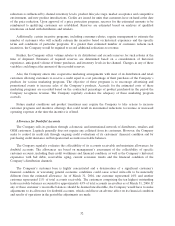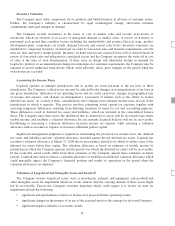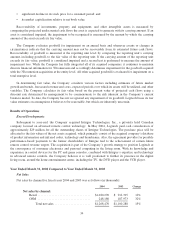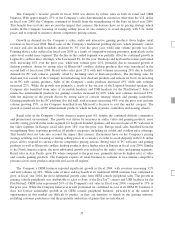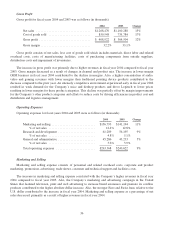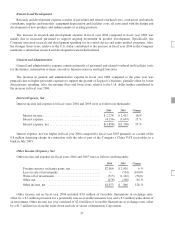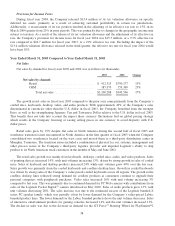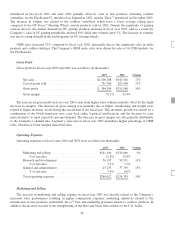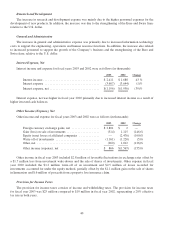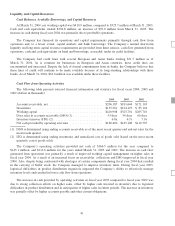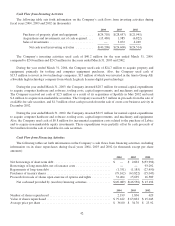Logitech 2004 Annual Report Download - page 70
Download and view the complete annual report
Please find page 70 of the 2004 Logitech annual report below. You can navigate through the pages in the report by either clicking on the pages listed below, or by using the keyword search tool below to find specific information within the annual report.reductions is influenced by channel inventory levels, product lifecycle stage, market acceptance and competitive
environment, and new product introductions. Credits are issued for units that customers have on hand at the date
of the price reduction. Upon approval of a price protection program, reserves for the estimated amounts to be
reimbursed to qualifying customers are established. Reserves are estimated based on analyses of qualified
inventories on hand with distributors and retailers.
Additionally, certain incentive programs, including consumer rebates, require management to estimate the
number of customers who will actually redeem the incentive based on historical experience and the specific
terms and conditions of particular programs. If a greater than estimated number of customers redeem such
incentives, the Company would be required to record additional reductions to revenue.
Further, the Company offers volume rebates to its distributors and records reserves for such rebates at the
time of shipment. Estimates of required reserves are determined based on a consideration of historical
experience, anticipated volume of future purchases, and inventory levels in the channel. Changes in any of these
variables could impact the amount of the recorded reserves.
Also, the Company enters into cooperative marketing arrangements with most of its distribution and retail
customers allowing customers to receive a credit equal to a set percentage of their purchases of the Company’s
products for various marketing programs. The objective of these programs is to encourage advertising and
promotional events to increase sales of the Company’s products. Accruals for the estimated costs of these
marketing programs are recorded based on the contractual percentage of product purchased in the period the
Company recognizes revenue. The Company regularly evaluates the adequacy of these marketing program
accruals.
Future market conditions and product transitions may require the Company to take actions to increase
customer programs and incentive offerings that could result in incremental reductions to revenue or increased
operating expenses at the time the incentive is offered.
Allowance for Doubtful Accounts
The Company sells its products through a domestic and international network of distributors, retailers and
OEM customers. Logitech generally does not require any collateral from its customers. However, the Company
seeks to control its credit risk through ongoing credit evaluations of its customers’ financial condition and by
purchasing credit insurance on European retail accounts receivable balances.
The Company regularly evaluates the collectibility of its accounts receivable and maintains allowances for
doubtful accounts. The allowances are based on management’s assessment of the collectibility of specific
customer accounts, including their credit worthiness and financial condition, as well as the Company’s historical
experience with bad debts, receivables aging, current economic trends and the financial condition of the
Company’s distribution channels.
The Company’s customer base is highly concentrated and a deterioration of a significant customer’s
financial condition, or worsening general economic conditions could cause actual write-offs to be materially
different from the estimated allowance. As of March 31, 2004, one customer represented 16% and another
customer represented 11% of total accounts receivable. The customers comprising the ten highest outstanding
trade receivable balances accounted for approximately 63% of total accounts receivables as of March 31, 2004. If
any of these customer’s receivable balances should be deemed uncollectible, the Company would have to make
adjustments to its allowance for doubtful accounts, which could have an adverse affect on its financial condition
and results of operations in the period the adjustments are made.
32


